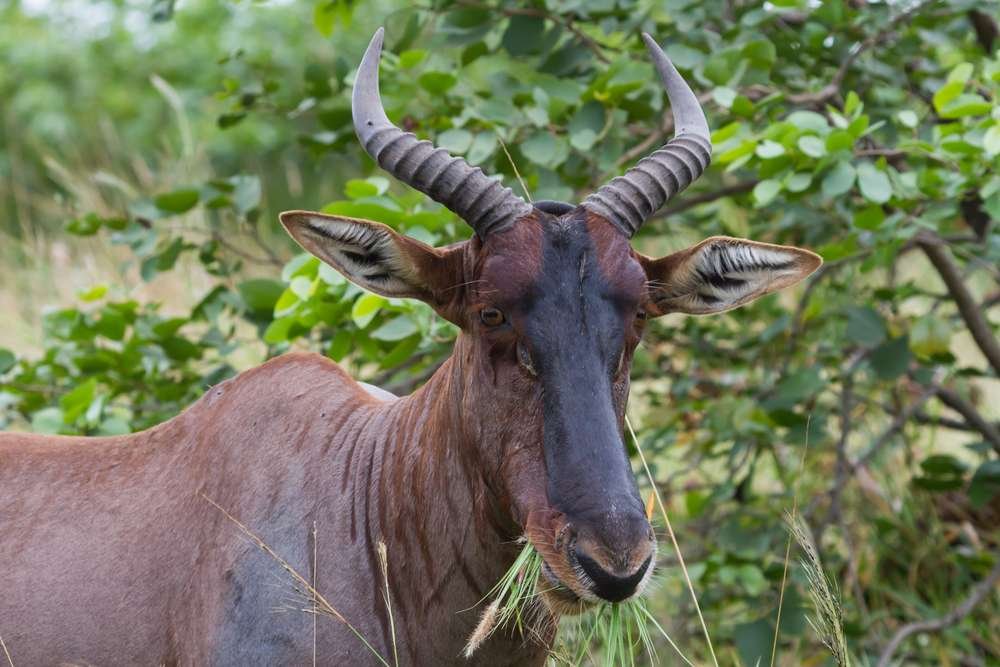Common Tsessebe
( common Sassaby )
- Damaliscus lunatus lunatus
- IUCN Status: Least Concern
- Trend: decreasing

- Kingdom: Animalia
- Phylum: Chordata
- Class: Mammalia
- Order: Artiodactyla
- Family: Bovidae
- Subfamily: Alcelaphinae
- Genus: Damaliscus
Share:
General Information
The Damaliscus lunatus lunatus is the southern african subspicies of the tsessebe. It is one of the fastest antelope and a favourite for trophy hunters.
Description
The fronts of their faces and their tail tufts are black, their bodies are chestnut brown, the forelimbs and thigh are greyish or bluish-black. Their hindlimbs are brownish-yellow to yellow and their bellies are white. they do not differ significantly from the Bangweulu tsessebe, but in general the Bangweulu tsessebe are on average the darkest-coloured and have the most robust horns, although differences are slight and individuals in both populations show variation in these characteristics which almost completely overlap each other.- Length: 150 to 230 cm
- Weight: up to 140 kg
- Lifespan: up to 15 yrs
Ecology & Behaviour
Tsessebe are social animals. Females form herds composed of six to 10, with their young. After males turn one year of age, they are ejected from the herd and form bachelor herds that can be as large as 30 young bulls. Tsessebe declare their territory through a variety of behaviors such as moving in an erect posture, high-stepping, defecating in a crouch stance, ground-horning, mud packing, shoulder-wiping, grunting and horning of the ground. Another far more curious form of territory marking is through the anointing of their foreheads and horns with secretions from glands near their eyes.
Conservation
It is categorised with a “Least concern” status on the IUCN Red list.
Distribution & Habitat
Tsessebe are primarily grazing herbivores in grasslands, open plains, and lightly wooded savannas, but they are also found in rolling upland. Tsessebe can travel up to 5 km to reach a viable water source. To avoid encounters with territorial males or females, they usually travel along territorial borders, though it leaves them open to attacks by lions and leopards.
Interaction with Humans
They can be legally hunted in game management areas. Hunters must purchase permits, as well as pay trophy fees upon shooting an animal. Local inhabitants of the floodplains occasionally hunt the animals for food under the permit system. The hunting season in typically between May and November.
No donation to this project yet.
| M | T | W | T | F | S | S |
|---|---|---|---|---|---|---|
| 1 | 2 | 3 | 4 | 5 | 6 | |
| 7 | 8 | 9 | 10 | 11 | 12 | 13 |
| 14 | 15 | 16 | 17 | 18 | 19 | 20 |
| 21 | 22 | 23 | 24 | 25 | 26 | 27 |
| 28 | 29 | 30 | 31 | |||


